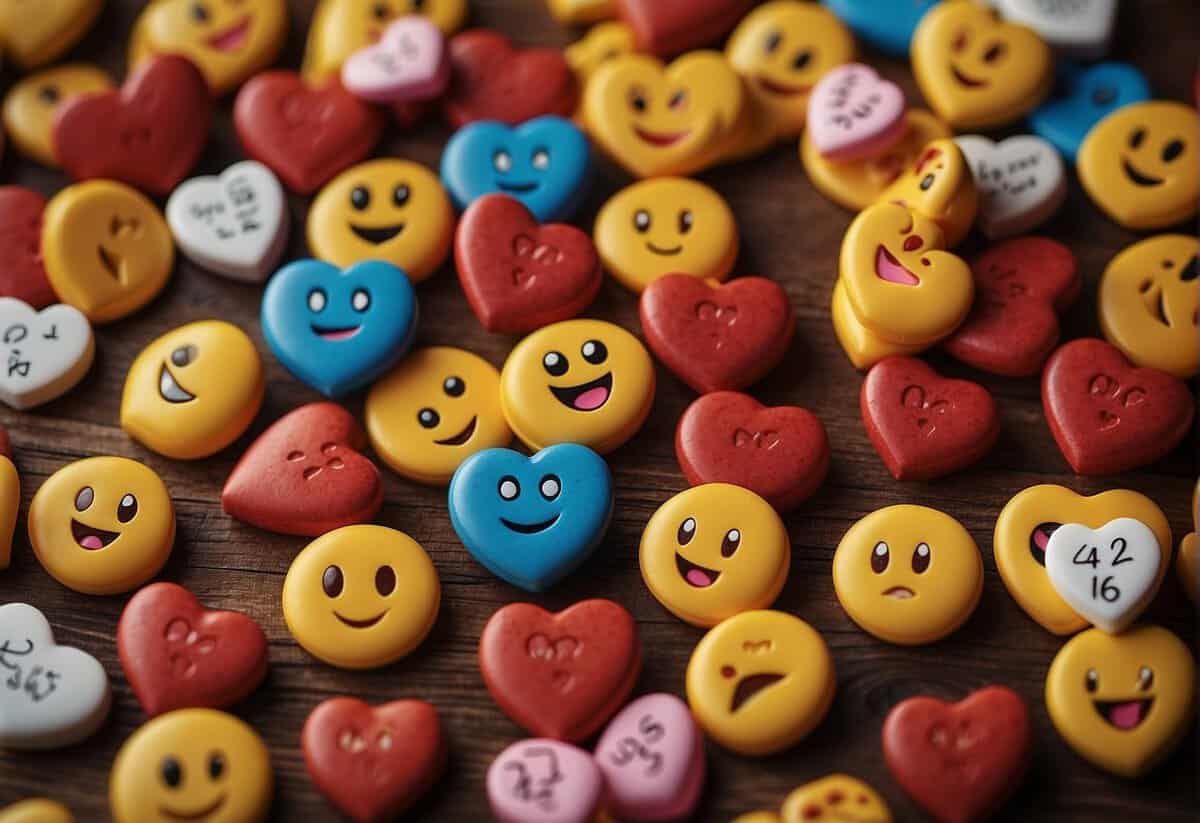How Many Boyfriends Does the Average Woman Have? Unpacking Relationship Statistics
Exploring the romantic history of an individual can reveal interesting patterns and insights into personal behavior and societal norms. When considering the average number of boyfriends a woman may have, it’s important to take into account that this figure can vary widely due to cultural backgrounds, social environments, and personal choices. Relationship dynamics have evolved over time, and with this, the number of romantic relationships a person has throughout their lifetime may change as well.

Gender differences also play a role in the average number of partners, with societal expectations often influencing the behaviors of both men and women differently. While statistics can offer a general idea, the significance of these relationships and how they align with someone’s values is deeply personal and cannot be condensed into a simple number. After all, each person’s journey is unique, and the number of partners one has does not define the richness or depth of their romantic experiences.
Key Takeaways
- Romantic history varies greatly among individuals owing to personal and societal factors.
- Societal expectations often influence relationship dynamics differently across genders.
- The significance of romantic relationships is subjective and cannot be generalized by numbers.
Cultural and Demographic Perspective

As you explore the varying dating experiences across cultures and demographics, you’ll notice the influence of cultural norms and comprehensive research on the topic. Your understanding of these factors will deepen by considering age-specific behaviors and cross-country differences.
Age and Sexual Behavior Trends
According to the National Survey of Family Growth, the number of sexual partners a woman has can vary widely based on her age group. For example, data indicates that millennials might have different sexual behaviors compared to the baby boomers. Statistics show that individuals in the 18-24 age bracket are currently experiencing shifts in relationship statuses, with both men and women showing a slight decrease in marriage rates and an increase in cohabitation.
- 18-24 Years Old: Trends show more exploratory phases, with an average number of boyfriends higher than in older age groups.
- 25-29 Years Old: Data suggests a gradual shift to more serious relationships, reflected in cohabitation rates.
- Baby Boomers: Historically have displayed more traditional patterns of dating, often resulting in earlier marriages and hence fewer boyfriends.
Millennials and Post-Millennials approach dating with a more liberal stance, often influenced by technological advancements like dating apps.
Cross-Country Comparison
When looking at the dating landscape across different countries, cultural norms heavily influence how many boyfriends the average woman might have. For instance:
- U.S.: A liberal approach to dating could mean more boyfriends on average. In states like Utah, where there’s a significant cultural emphasis on marriage and family, numbers might be lower.
- Europe: Countries like Italy, with a strong romantic culture, may showcase different dating behaviors compared to more conservative cultures.
- China: Traditional values and societal pressures can result in fewer dating partners before marriage.
Every society’s unique cultural backdrop plays a pivotal role in shaping the dating lives of its members. For example, a national survey on dating preferences in the United States reflects on the importance of employment status, living situation, and other lifestyle choices that could influence the dating scene and potentially the number of partners someone has.
Influences on Relationship Dynamics

Navigating the complexities of romantic relationships in modern times can be influenced by a myriad of factors. From the digital tools we use to find potential partners to the personal factors that affect our needs and desires, these aspects play a critical role in shaping how your relationships unfold.
Role of Technology in Dating
Online Dating: A revolution in how you find love, online dating has dramatically altered the romantic landscape. Statistics show a significant number of couples now meet through dating apps, fostering both short-term flings and committed relationships. Your chances of finding someone aligned with your preferences are increased by algorithm-driven platforms, deep insights into relationship dynamics reflect the profound impact technology has on social connections.
- Social Media: While it’s a tool to keep you connected with friends and family, social media also plays a part in your romantic life. It introduces a space where interactions and personal content can influence perceptions and trust between partners, affecting the stability of a serious relationship.
Sexual Health and Well-Being
- STIs and Physical Health: An essential aspect of a healthy sexual relationship is the awareness and management of STIs, like human papillomavirus (HPV), which can lead to health concerns such as cancer. Open conversations and regular screenings are crucial to maintain both partners’ physical health.
- Mental Health: The state of your sexual health is intertwined with your mental well-being. Issues like depression, substance use, anxiety, and stress can emerge from or affect sexual relationships. It’s important to be attentive to these components for the longevity and satisfaction of any romantic relationship or your journey in finding true love.
Significance of Relationship Values

In understanding the dynamics of relationships, recognizing the importance of core values like respect, commitment, and trust can be the deciding factors between a fleeting encounter and a lasting bond. Let’s explore how these values play a central role.
Communication and Trust
Trust forms the foundation of any relationship. If you aim for longevity in romantic connections, trust must be nurtured through open and honest communication. This includes discussing your deal breakers and ensuring you respect each other’s boundaries and opinions.
- Importance: Trust is built over time and requires you to be forthcoming about your feelings and experiences.
- Action: Practice open communication daily to strengthen this foundation, ensuring both partners feel heard and valued.
Personality and Physical Attraction
While physical attraction may spark initial interest, it’s your personality that sustains a relationship. Attributes such as kindness, confidence, and passion are significant in maintaining a romantic connection. Don’t overlook:
- Physical Attraction: Yes, looks can be important, but they often take a backseat to personality traits in the grand scheme of things.
- Personality: It’s the unique combination of your character traits, like humor and intellect, that can make the relationship exhilarating and deeply satisfying.
Values like these help to forge a deeper, more meaningful connection where both parties feel valued and committed. Embrace these principles, and you may find a relationship that is enriching and enduring.
Frequently Asked Questions

Navigating the landscape of relationships can be quite intriguing. Here you’ll find answers to some of the most commonly asked questions about the number of relationships a woman might have.
What’s the typical number of relationships a woman has before getting married?
It’s observed that on average, a woman may have around 5 relationships before finding “the one” they feel is suitable for marriage.
By the age of 30, how many romantic partners do most women have?
By the time most women reach age 30, they typically have had anywhere from 4 to 7 romantic partners, as people’s experiences vary widely.
Is there an average number of ex-partners for individuals?
Yes, while the numbers can vary greatly from person to person, there are studies suggesting the average number of ex-partners an individual may have; however, the specific average can shift based on demographic factors and survey methods.
At 40, what’s the average number of intimate partners for women?
The average number of intimate partners for women at age 40 is not universally documented, as it’s heavily dependent on individual choices and societal trends at any given time.
Throughout their lives, how many relationships do women generally experience?
Throughout their lifetime, women may experience a range of relationships, but quantifying an exact average number is challenging without specific context or updated statistical data.
During their 20s, how many romantic relationships does a person usually have?
During their 20s, it’s common for an individual to explore different romantic relationships, with some experiencing a handful, and others pursuing more or fewer connections as they navigate their personal life and growth.


